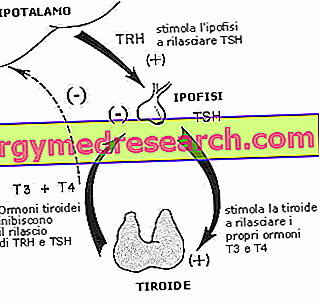Do you really believe that the veins are an excellent index to assess a person's fat percentage? In this article we will try to evaluate the veracity of this statement.
A LITTLE ANATOMY ...
Blood circulation allows the passage of blood through the various tissues of the human body. The heart and blood vessels (arteries, veins and lymphatic vessels) are the main anatomical structures involved in this step.
The heart with its contraction pushes the blood into circulation through the arteries that bring oxygen and nutrients to the tissues. From here the blood is depleted of its nutrients and enriched with carbon dioxide and other waste substances. At this point, the blood from the tissues returns to the heart thanks to the venous system.
In the veins the thrust of the heart is lost, which is almost completely exhausted during the passage between arterial and peripheral capillary arteries. This deficit is associated with the negative action of the force of gravity that further hinders venous return, for example we think of the difficulty that the blood faces to return from the veins of the lower limbs to the heart.
However, our body is equipped with different systems to promote venous circulation.
The contraction of the deep calf muscles is for example able to push the blood towards the heart thanks to the rhythmic alternation of contraction and relaxation.
A very articulated system of valves (called "swallow's nest") allows the passage of blood in a single direction, closing in the event of reflux towards the periphery. Also the diastolic contraction of the heart facilitates the venous return "sucking" the blood from the periphery. The same applies to respiratory mechanics.
Finally, remember that venous pressure is much lower than arterial pressure (due to the absence of cardiac thrust) and that venous blood has a darker color, tending to blue (precisely because it is poorer in oxygen).
SEE ALSO: Deep Anatomy Veins
MUSCULAR CONTRIBUTION AND BLOOD PRESSURE
The arteries are located deeper than the veins. An arterial lesion would in fact result in severe bleeding, because it is facilitated by high blood pressure. On the contrary a venous lesion is hardly lethal and it is for this reason that these vessels flow more to the surface.

Hence the logical consideration that the body's percentage of fat and superficial visibility of the veins are correlated phenomena but not always proportional. In other words, not necessarily an individual in which superficial veins are distinguished more clearly is thinner than another. But how can this phenomenon be explained?
During weight lifting, the massive contraction of large muscle mass causes the occlusion of the blood vessels which results in an increase in pressure and greater effort on the part of the heart. Not by chance when bodybuilders pose tend to hold their breath just to increase blood pressure and highlight the much sought after veins.
But the blood pressure is also correlated to the number of capillaries present in the muscles and while the aerobic type activity favors the capilarization (the increase in the number of capillaries) that of power, typical of the bodybuilder does not act directly on this component.
It follows that those who train with weights generally have a higher blood pressure and that their heart and vessel walls are thicker than normal.
This explains why the visibility of veins and fat mass do not always go hand in hand.
Furthermore, it must be taken into consideration that subcutaneous fat is only a part of total body fat. For example, an individual with a lower subcutaneous fat percentage than another may actually have a higher visceral and muscular component (typical of bodybuilders) that would lead to a greater percentage of total fat mass.



